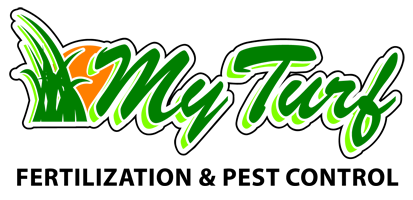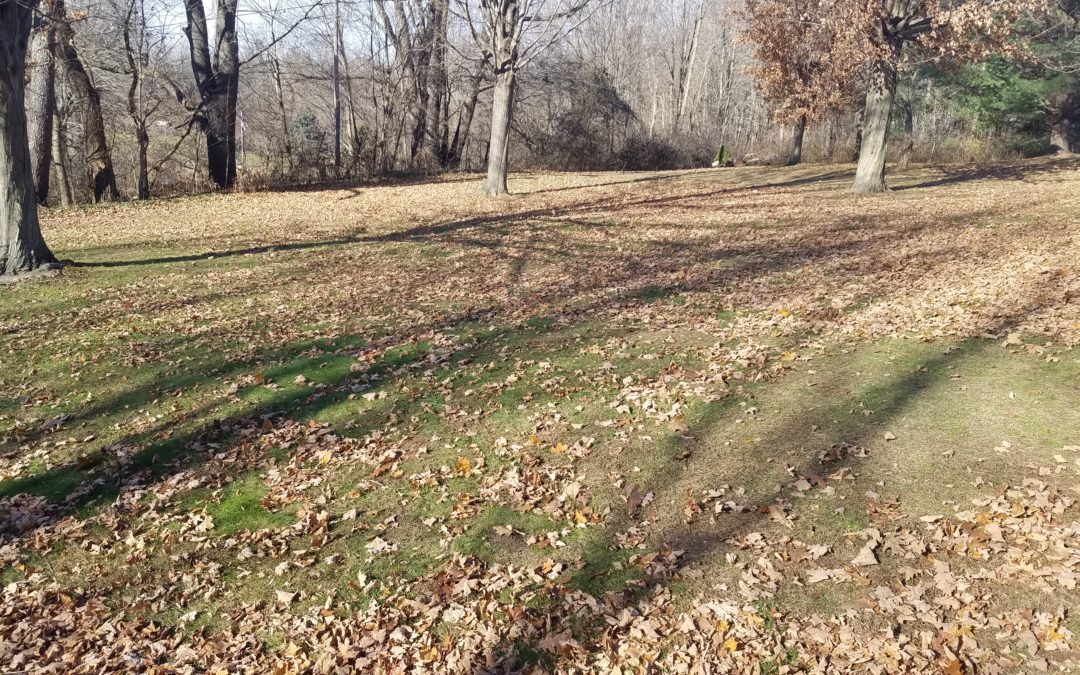
by Jason Kregel | Nov 21, 2018 | Blog
All of us at My Turf would like to wish everyone a very happy Thanksgiving. Please travel safely for all those who are travelling to visit family this weekend.
It seemed that the weather turned cold a bit early this year. November has been over 6 degrees cooler than average so far and believe it or not, we have received almost 9 inches of snow already! Many are also forecasting a cooler than average December as well.
Please take advantage of this holiday weekend to make a final go around on the lawn. Pick up any remaining leaves and lower your final cut to around or just under 2″. We are concerned for many lawns that still have a lot of leaf cover on them. If that leaf cover is allowed to remain over the winter, there will be a lot of reseeding to do in the spring. The lawn will suffocate and rot under a layer of leaves. Don’t let your lawn go to sleep for the winter like this:
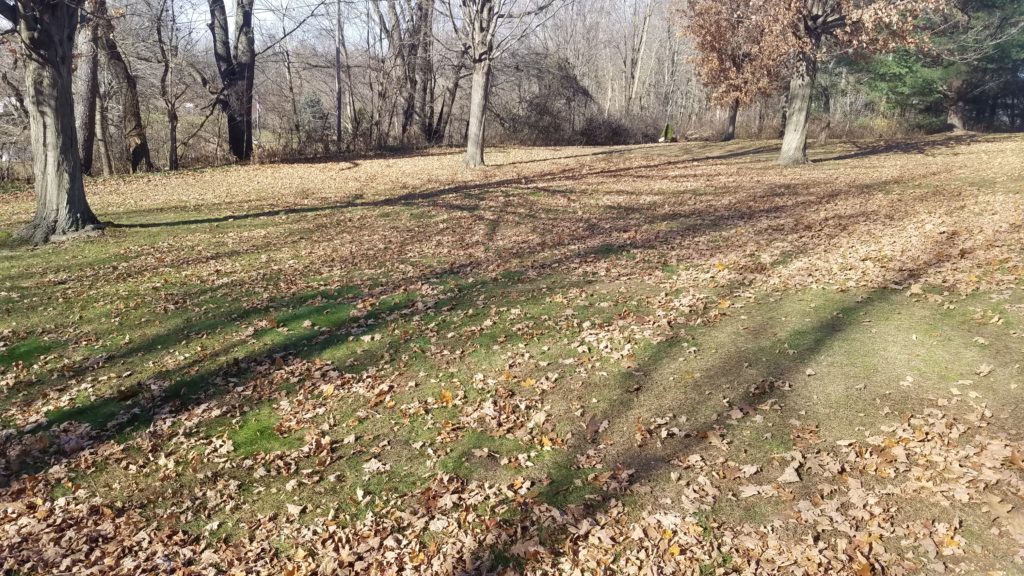
Once again, thank you so much for putting your trust in our company to take care of your outdoor needs this season. Please let us know if you have any questions or concerns. You may call 616-813-3135 or email office@myturfllc.com
The My Turf Team: Jason, Andy, Jay, David, Mike, Sean, and Todd.
“I treat your turf like it’s My Turf”
by Jason Kregel | Oct 11, 2018 | Blog
Just a quick reminder on a few things now that the weather is turning:
- If you haven’t already, please make sure to discontinue watering the lawn. We have had plenty of rain lately!
- You can schedule to have your irrigation system winterized anytime. If you have new seed planted, it may not hurt to schedule it for later this month just in case we have anymore warm or dry weather.
- Please lower your mowing height to around 2.5″. Make sure to measure the actual cut lawn with a ruler!
Don’t hesitate to call 616-813-3135 or email office@myturfllc.com if you have any questions.
I treat your turf like it’s My Turf
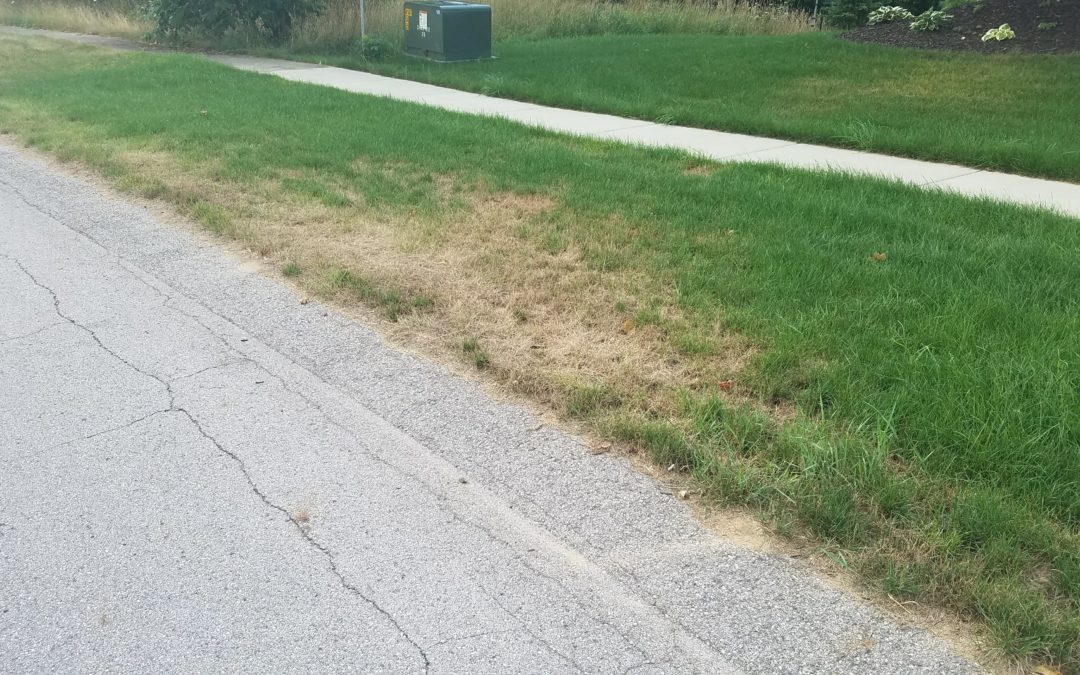
by Jason Kregel | Aug 30, 2018 | Blog
These past few months have been very hard on our turf in West Michigan. Very little rain, combined with stretches of ninety degree temperatures have left permanent drought damage in some lawns like we haven’t seen in quite awhile. If your lawn has some areas that look like this, they will need to be seeded this fall. Here are a few best practices to help with repairing your lawn this fall.
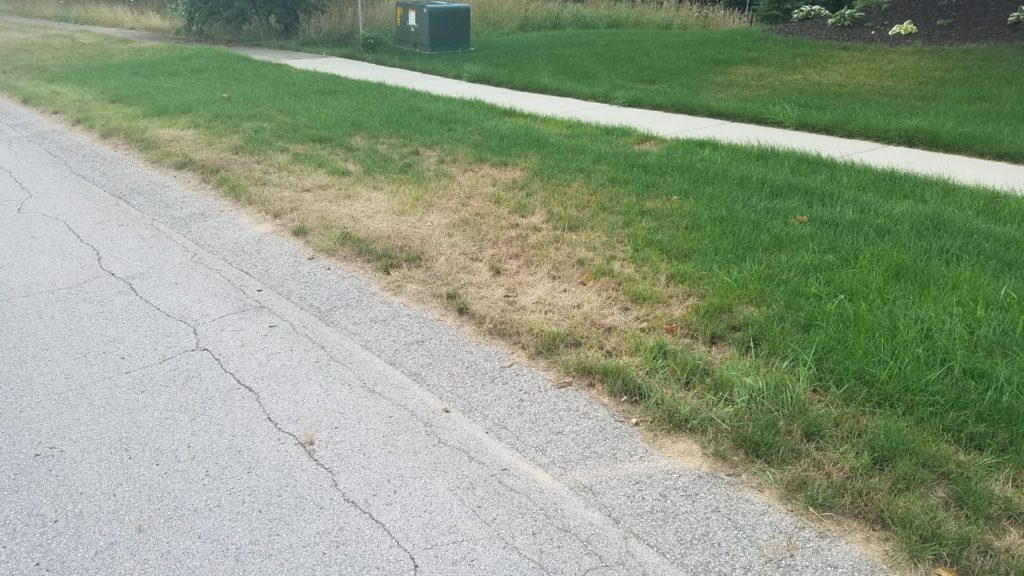
- Timing – The best time to reseed damaged areas is the first week of September. You can achieve good results into October, but an earlier seeding date will allow the turf to more fully develop this fall. Typically September and October bring cooler temperatures and more abundant rainfall to help with germination.
- Method – 2 different methods work well depending on your situation. The first is seed and compost- If your damage is smaller and more localized, it works very well to apply seed liberally to the bare areas, and cover the seed with ½” to 1” of compost. Use a light leaf compost, not manure compost. This will help provide nutrients to the new seed and more importantly hold soil moisture for the seed. You will achieve the best germination rate with this method. The second option would be slit seeding, or overseeding- If your damage is more widespread, it is not always practical to cover large areas with compost. In this situation it is best to rent a slit seeder from a local rental shop. This machine is designed to cut grooves in the soil and drop seed in those grooves. This will help improve the seed to soil contact for better germination. Make sure to slit seed when the grass is dry so the seed can fall all the way down into the soil.
- Watering – Once the seeding is completed, the most important thing you can do to aid in germination is regular watering. The new seed needs to stay damp all day to germinate or it will die. If you have an irrigation system, this means you will set the rotor zones for 10 minutes per zone and the spray zones for 4 minutes per zone. Run those zones 3 times per day (6am, noon, and 3pm.) Your goal is to keep the soil damp from 6am to 6pm. These times are only a guide, so make adjustments up or down as needed. If watering by hand, you will need to do the best you can- at least water morning and evening.
- Inform Us – Once you seed, send us an email to office@myturfllc.com to let us know when and where you seeded. We will record this information so we can adjust our applications as necessary to help your new seed cover the bare areas.
If you have any questions, please don’t hesitate to call 616-813-3135 or email office@myturfllc.com. We are happy to help walk you through any situation you might have.
“We treat your turf like it’s My Turf”
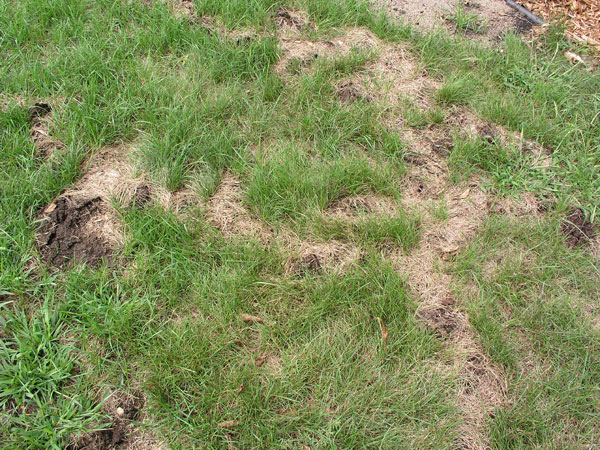
by Jason Kregel | Aug 7, 2018 | Blog
I can’t be sure when this folktale began, but I would like to take a moment to clear up a common misconception on the relationship between moles and grubs.
There is none.
There you have it. Yes, a mole will eat a grub, but their main diet consists of earthworms and other insects. Moles can and do make a mess of a lawn in a hurry and therefore should be addressed. There are two proven techniques for control: trapping or baiting. Whenever addressing moles, we need to be sure to be working on the active tunnels. If the damage is older than a few weeks, we recommend stomping or rolling down the tunnels, and removing the piles. This way you can watch for new activity and know exactly which tunnels to concentrate your efforts on.

Just a few helpful hints on control:
- Trapping- When trapping, we recommend using a loop style or choker style trap. They are cheap, simple to set, and effective. We have found that in harder soils, the harpoon style traps can push themselves out of the soil resulting in a sprung trap and no dead mole.
- Baiting- Talpirid or Tomcat brand baits work well. They typically come in trays and are designed to mimic earthworm characteristics. After locating the active tunnel, poke a hole in several areas, and drop a worm in the tunnel every 3-4 feet. Once the worm is inside, pinch the hole closed again. Be sure to use a fresh set of dish gloves to prevent your scent from touching the worm, as well as protecting yourself from the poisonous worm. Wait 2-3 weeks and stomp or roll down all the tunnels, and look for new damage to retreat as necessary.
If you are looking for more information on mole control, here is a link to an old article on the matter written by Dr. Kevin Frank from Michigan State University: http://msue.anr.msu.edu/news/moles_in_the_lawn
As always, let us know if you have any other questions!
“I treat your turf like it’s My Turf”
by Jason Kregel | Jun 29, 2018 | Blog
This is just a quick reminder to boost your watering times over the next week. We have some hot weather on it’s way and lawns will dry out quickly under these conditions. We recommend watering every morning between 3am and 7am. If the daytime temperature exceeds 90 degrees, we recommend a short afternoon cool down cycle, especially if you have lighter sand or gravel subsoil in your area. Click HERE for a link to some general watering tips.
“I treat your turf like it’s My Turf”
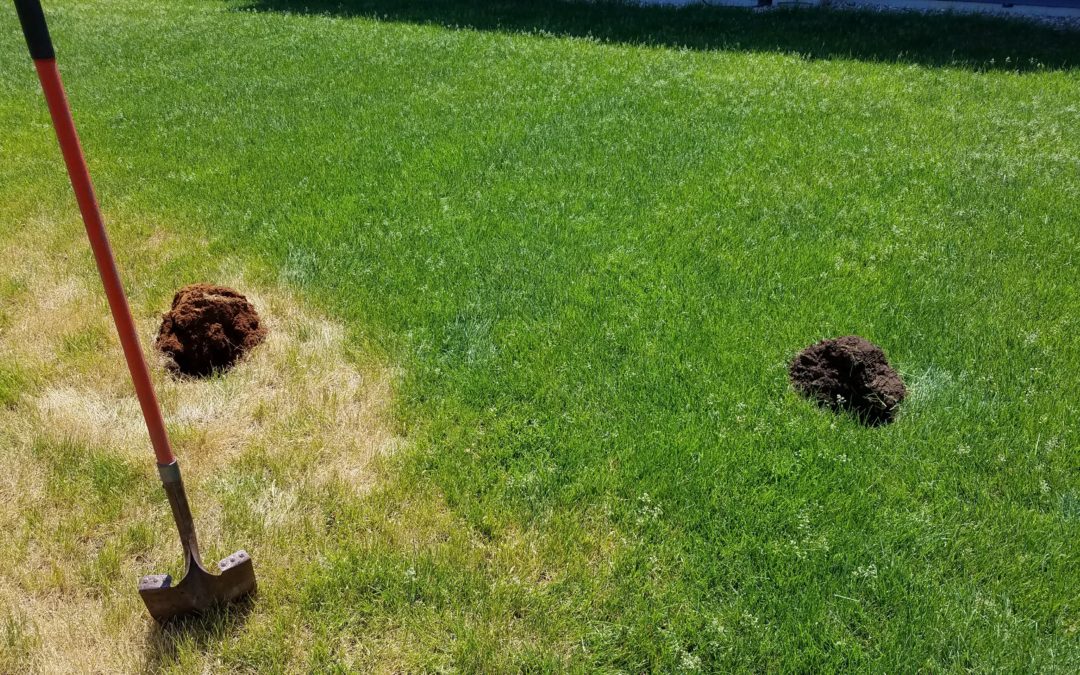
by Jason Kregel | Jun 8, 2018 | Blog
I have been reminded several times already this year how important a good layer of topsoil is for lawns to thrive. I thought I would share some pictures from a few site visits I have made over the past two months that show pretty clearly the need for good soil.
This first set of pictures was taken in Grandville back on May 3. We did have a pretty slow green up this year with how cool soil temperatures stayed, but this customer was having a problem in just a small area in his backyard. The rest of the lawn had awaken out of dormancy quite well. When I arrived, it appeared that there was just a 15′ by 15′ area that was still quite dormant and did not look healthy. A quick insect check came up negative. After digging a few plugs of soil out of the affected area, I found 1″ or less of topsoil, with heavy clay right below the turf. Moving over just a few feet into an area that was not affected, I found a nice 6″ layer of topsoil. The difference was stunning.
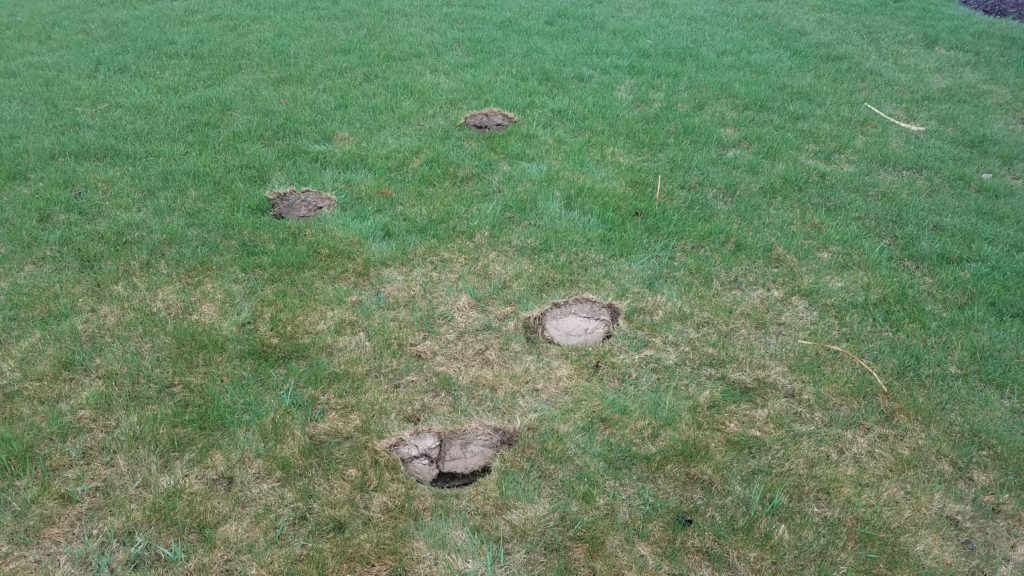
Here is a shot of the surrounding area. The rest of the lawn actually looked quite healthy.
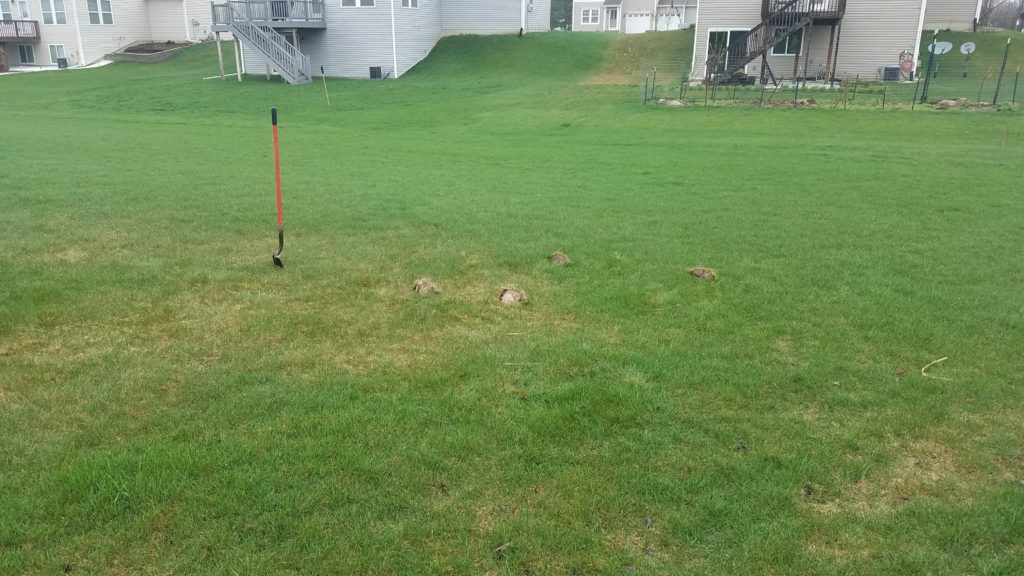
Fast forward a month, and over the Memorial day weekend we had 3 or 4 days in a row that hit 90 degrees. I received a few calls about drought issues in lawns, and irrigation systems not being able to keep up. Next up: Hudsonville. I performed my typical insect check which came up negative. What I did find was a decent layer of topsoil with pure sand below. In the healthy areas, the sub soil was much more heavy and therefore held much more moisture. Here again, the difference in soil quality, and therefore turf quality was extremely different just a few feet apart.
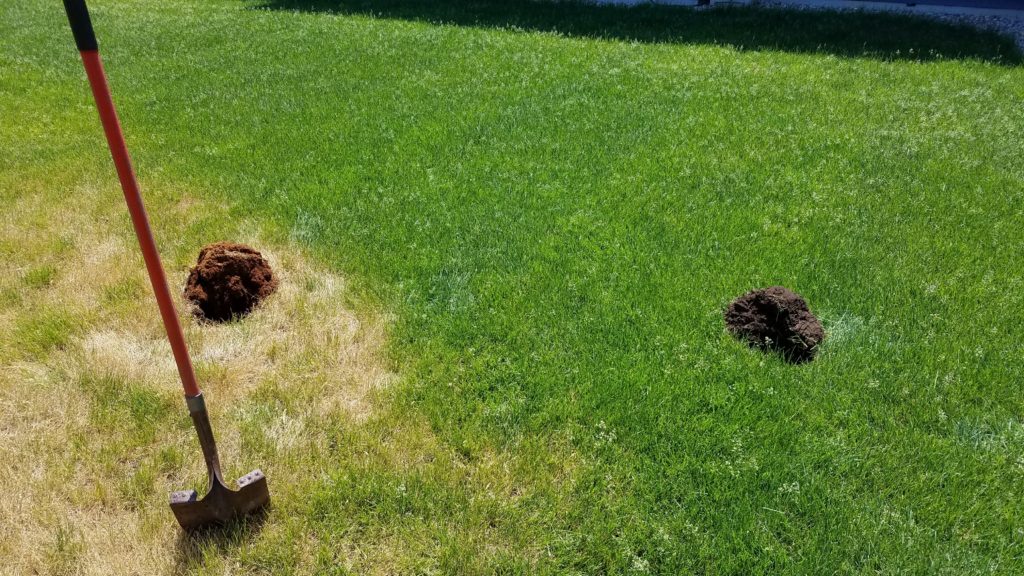
This final picture was taken on a site in Grand Rapids. In this case, I could find no topsoil at all. The subsoil in the area was a very porous sand. There was decent topsoil quality and amounts elsewhere throughout the lawn.
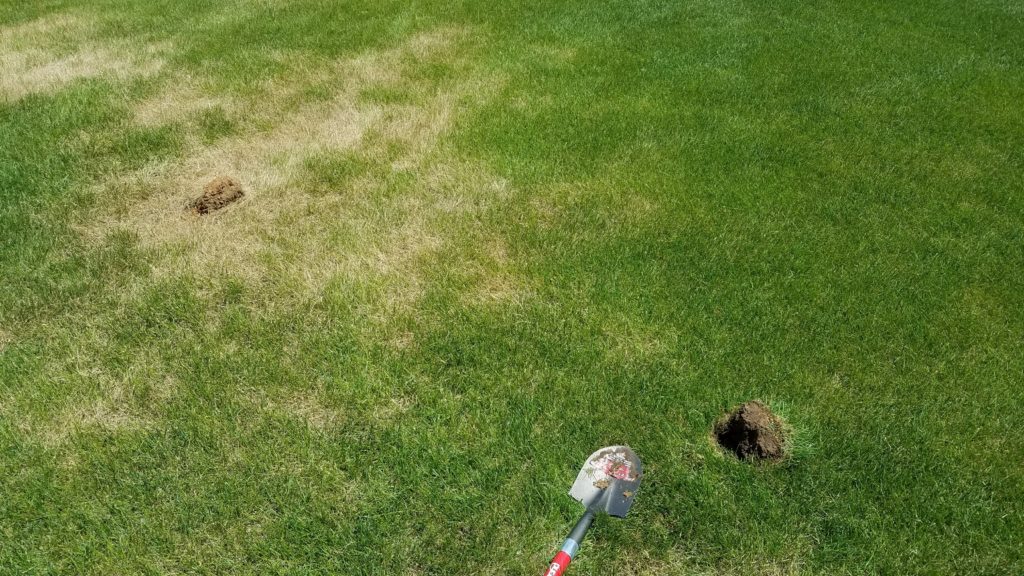
So what’s the moral of the story? Do not skimp on topsoil!
Yes, with the right nutrient and watering schedule we can grow grass initially on just about any type of soil. Will it always look good on poor soil? Probably not.
How do we proceed in these situations? The best thing would be to dig up the areas and replace the soil. Unfortunately this probably isn’t a viable option in most cases. In the situations where the soil is very sandy, I would recommend adding a light afternoon watering to your schedule on just the poor areas if the temperature exceeds 80 degrees. This will give the grass an afternoon cool down period and will probably be enough to keep those areas in check. Adding a thin layer of compost over the top of the soil is also an option to help amend the existing soil with something that will hold moisture longer.
In the case of the clay situation, I would recommend aerating regularly and amending with compost as well.
Adjustments can be made so that these situations can be dealt with, but we need to be aware of where they are, and what it takes to keep them looking good.
Email us at office@myturfllc.com or call us at 616-813-3135 if you have any questions.
“I treat your turf like it’s My Turf”

